The PCB etching technique generally refers to etching, which is also called photochemical etching. It refers to removing the protective film of the region to be etched after exposure and plate making, and is exposed to the chemical solution during etching to achieve the effect of dissolving and etching, thereby forming the effect of unevenness or hollowing. With the development of the PCB industry, the impedance requirements of various wires are also getting higher and higher, which inevitably requires more strict control of the width of the wires. In the extensive use of life, the quality of PCB is getting better and better, and it is more and more reliable. It is more and more diversified and more perfect. Etching technology is also becoming more widespread in PCB design.
1. Problem: Reduced etch rate in printed circuits
the reason:
Due to improper control of process parameters
Solution:
According to the process requirements, the process parameters such as temperature, spray pressure, solution specific gravity, pH value and ammonium chloride content are adjusted to the process specifications.
2. Problem: precipitation of etching solution in printed circuit
the reason:
(1) The content of ammonia is too low
(2) excessive dilution of water
(3) The solution has a large specific gravity
Solution:
(1) Adjust the PH value to the specified value of the process or appropriately reduce the amount of exhaust air.
(2) When adjusting, strictly follow the requirements of the process requirements or appropriately reduce the amount of exhaust air.
(3) Dissolve a part of the solution with a high specific gravity according to the process requirements, and add an aqueous solution of ammonium chloride and ammonia after analysis to adjust the specific gravity of the etching solution to the range of the process.
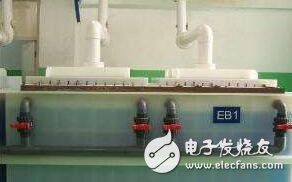
3. Problem: Metal resist plating in the printed circuit is etched
the reason:
(1) The pH of the etching solution is too low
(2) The chlorine ion content is too high
Solution:
(1) Adjust to the appropriate pH according to the process specifications.
(2) Adjust the chloride ion concentration to the process specified value.
4. Problem: The copper surface in the printed circuit is black and the etching is not moving.
the reason:
The sodium chloride content in the etchant is too low
Solution:
Adjust the sodium chloride to the process specified value according to the process requirements.
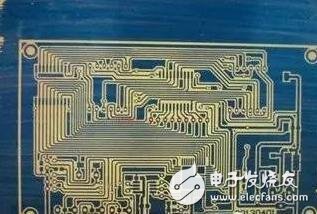
5. Problem: There is residual copper on the surface of the substrate in the printed circuit.
the reason:
(1) insufficient etching time
(2) The film is not clean or has a resist metal
Solution:
(1) Perform the first test according to the process requirements to determine the etching time (ie, adjust the transfer speed).
(2) Before the etching, the board surface should be inspected according to the process requirements, and no residual film or corrosion-resistant metal plating is required.
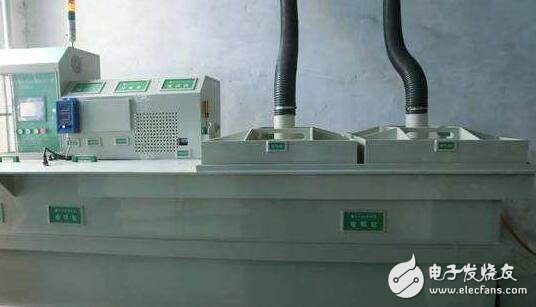
6. Problem: The etching effect on both sides of the substrate in the printed circuit is obviously different.
the reason:
(1) The etched section of the device is blocked
(2) The conveying rollers in the equipment should be staggered in front and rear of each rod, otherwise the surface of the board will be traced.
(3) The spray pressure drops due to water leakage from the nozzle (usually at the joints of the nozzle and manifold)
(4) The solution in the preparation tank is insufficient, causing the motor to idling
Solution:
(1) Check the nozzle blockage and clean it in a targeted manner.
(2) Re-examine and arrange the roller staggered positions of each section of the equipment.
(3) Check each joint of the pipeline and repair and maintain it.
(4) Regularly observe and promptly add to the position specified in the process.
7. Problem: uneven etching of the board surface in the printed circuit, leaving part of the residual copper
the reason:
(1) The surface of the substrate is not completely removed, and a residual film exists.
(2) When the whole plate is plated with copper, the thickness of the copper plating on the plate surface is uneven.
(3) The board surface is stained with the ink of the etching machine when it is corrected or repaired by the ink.
Solution:
(1) The surface of the substrate is not completely removed, and a residual film exists.
(2) When the whole plate is plated with copper, the thickness of the copper plating on the plate surface is not uniform.
(3) The board surface is stained with the ink of the etching machine when it is corrected or repaired by the ink.
(4) Check the process conditions of the film removal, adjust and improve.
(5) According to the density of the circuit pattern and the accuracy of the wire, to ensure the consistency of the thickness of the copper layer, a brushing and flattening process can be employed.
(6) The repaired ink must be cured, and the contaminated rollers are inspected and cleaned.
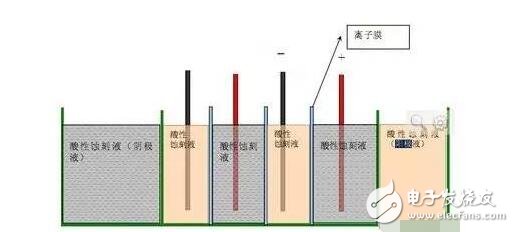
8. Problem: severe side etching of the wire after etching in the printed circuit board
the reason:
(1) The nozzle angle is wrong, the nozzle is out of tune
(2) The spray pressure is too large, causing rebound and serious side erosion
Solution:
(1) Adjust the nozzle angle and nozzle to meet the technical requirements according to the instructions.
(2) According to the process requirements, the spray pressure is usually set to 20-30 PSIG and adjusted by the process test method.
9. Problem: The substrate advancing on the conveyor belt in the printed circuit shows a diagonal phenomenon
the reason:
(1) Equipment installation is poorly level
(2) The nozzle inside the etching machine will automatically swing back and forth, and it is possible that part of the nozzle swings incorrectly, causing the uneven spray pressure on the board surface to cause the substrate to slant
(3) The damage of the gear of the conveyor belt caused by the damage of the conveyor belt of the etching machine
(4) The drive rod in the etching machine is bent or twisted
(5) Squeeze water stop roller damage
(6) The position of the baffle of the etching machine is too low, so that the conveyed plate is blocked.
(7) The upper and lower spray pressures of the etching machine are not uniform, and when the pressure is too large, the top plate will be raised.
Solution:
(1) Adjust according to the equipment manual, adjust the horizontal angle and arrangement of each roller, and meet the technical requirements.
(2) Check in detail whether the nozzle oscillations of each section are correct and adjust according to the equipment manual.
(3) Inspections should be carried out piece by piece according to the process requirements, and the damaged or damaged gears and rollers should be replaced.
(4) Replace the damaged transmission rod after detailed inspection.
(5) Damaged accessories should be replaced.
(6) After inspection, adjust the angle and height of the baffle according to the equipment manual.
(7) Adjust the spray pressure appropriately.
10. Problem: The copper on the board surface of the printed circuit is not completely copper, and some copper is left on the edge.
the reason:
(1) The dry film is not removed (it may be difficult to remove the film due to excessive thickening of the copper plating and tin-lead plating to cover a small amount of dry film)
(2) The conveyor belt is too fast in the etching machine
(3) When tin-plated lead is applied, the plating solution penetrates into the bottom of the dry film to cause a very thin coating to stain the dry film, so that the speed of etching the copper is slowed down to form residual copper on the edge of the wire.
Solution:
(1) Check the film removal situation, strictly control the thickness of the coating to avoid the extension of the coating.
(2) Adjusting the speed of the conveyor belt of the etching machine according to the etching quality.
(3) A check filming procedure, select appropriate film temperature and pressure to improve the adhesion of dry film to copper surface
B Check the micro-roughening state of the copper surface before the film is applied.
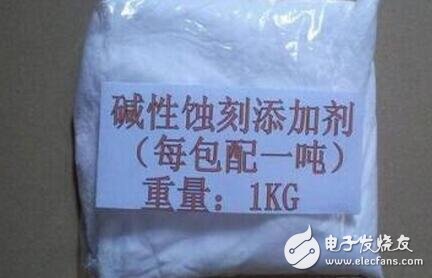
11. Problem: The etching effect on both sides of the board in the printed circuit is not synchronized
the reason:
(1) The thickness of the copper layer on both sides is inconsistent
(2) uneven spray pressure on the upper and lower sides
Solution:
(1) A according to the thickness of the two sides of the plating, the upper and lower spray pressure (the thickness of the copper layer facing down);
B uses a single-sided etch to only actuate the lower nozzle pressure.
(2) A checks the upper and lower spray pressure and adjusts according to the quality of the etched plate;
B. Check whether the nozzle of the etching section in the etching machine is blocked, and use the test plate to adjust the upper and lower spray pressure.
12. Problem: Alkaline etching solution is excessively crystallized in printed circuits
the reason:
When the pH of the alkaline etching solution is lower than 80, the solubility is deteriorated to cause precipitation and crystallization of the formed copper salt.
Solution:
(1) Check if the amount of sub-liquid in the spare tank for replenishment is sufficient.
(2) Check if the controller, piping, pump, solenoid valve, etc. of the sub-liquid replenishment are abnormally blocked. (3) Check if excessive air is drawn, and a large amount of ammonia gas escapes, resulting in a decrease in pH. (4) Check if the function of the PH meter is normal.
13. Problem: The etching speed is reduced during continuous etching in the printed circuit, but the etching speed can be restored if it is stopped for a period of time.
the reason:
Excessive air volume, resulting in insufficient oxygen supplementation
Solution:
(1) Find the correct amount of air taken by the process test method.
(2) Debug according to the instructions provided by the supplier to find the correct data.
14. Problem: Photoresist shedding (dry film or ink)
the reason:
(1) The pH of the etching solution is too high, and the alkaline water-soluble dry film and ink are easily destroyed.
(2) The sub-liquid replenishment system is out of control
(3) The type of photoresist itself is incorrect and the alkali resistance is poor.
Solution:
(1) Adjust according to the values ​​determined by the process specifications.
(2) Detect the pH value of the liquid, maintain proper ventilation, and do not allow ammonia to directly enter the area where the board is transported.
(3) A good dry film can withstand PH=9 or more.
B uses a process test to test the dry film alkali resistance or replace the brand new photoresist.
15. Problem: Exfoliated wires become thinner in printed circuits
the reason:
(1) conveyor belt transmission speed is too slow
(2) When the pH is too high, the side etching will be aggravated
(3) The specific gravity value of the etching solution is lower than the standard setting value
Solution:
(1) Check the relationship between the thickness of the copper layer and the transmission speed, and set the operating parameters.
(2) Detect the pH of the etching solution. If it is higher than the range specified by the process, it can be used to strengthen the exhaust air until it returns to normal. (3) Check the specific gravity value. If it is lower than the set value, copper salt should be added and the sub-liquid supplement should be stopped. , to make its specific gravity value rise to within the scope of the process.
16. Problem: Insufficient etching in printed circuits, too much residual
the reason:
(1) Conveyor belt transmission speed is too fast
(2) The pH of the etching solution is too low (the value of the etching solution has little effect on the etching speed, but the side etching will decrease when the pH is lowered, but the residual foot becomes larger)
(3) The specific gravity of the etching solution exceeds the normal value (the specific gravity has little effect on the etching rate, but when the specific gravity increases, the side etching will decrease)
(4) The temperature of the etching solution is insufficient
(5) Insufficient spray pressure
Solution:
(1) Check the relationship between the thickness of the copper layer and the transfer speed of the etching machine, and find the optimum operating conditions by the process test method.
(2) Detecting the pH value of the etching solution. When the value is lower than 80, an improved method, such as adding ammonia water or accelerating the sub-liquid supplement and reducing the suction, is required.
(3) A detects the specific gravity value of the etching solution, and adds more sub-liquid to reduce the specific gravity value to the specified range of the process.
B Check if the sub-liquid replenishment system is malfunctioning.
(4) Check if the function of the heater is abnormal.
(5) A check the spray pressure and adjust to the final state.
BCheck if there is any abnormality in the pump or piping.
The water level in the C preparation tank is too low, causing the pump to idle, check the liquid level control, replenishment, and operation procedures of the discharge pump.
We make OBD connector with terminal by ourselves, soldering type and crimping type are both available. Also 12V and 24V type. OBD1, OB2, J1939, J1708, J1962, etc. Also molded by different type, straight type or right-angle type. The OBD connector cables used for Audi, Honda, Toyota, BWM, etc. We have wide range of materials source , also we can support customers to make a customized one to replace the original ones.
Vehicle Diagnostic Cables,Diagnostic OBD Cable,OBD2 Splitter Y Cables,OBD2 Diagnostic Adapters,OBD Heavy Vehicle Cables
ETOP WIREHARNESS LIMITED , https://www.wireharness-assembling.com